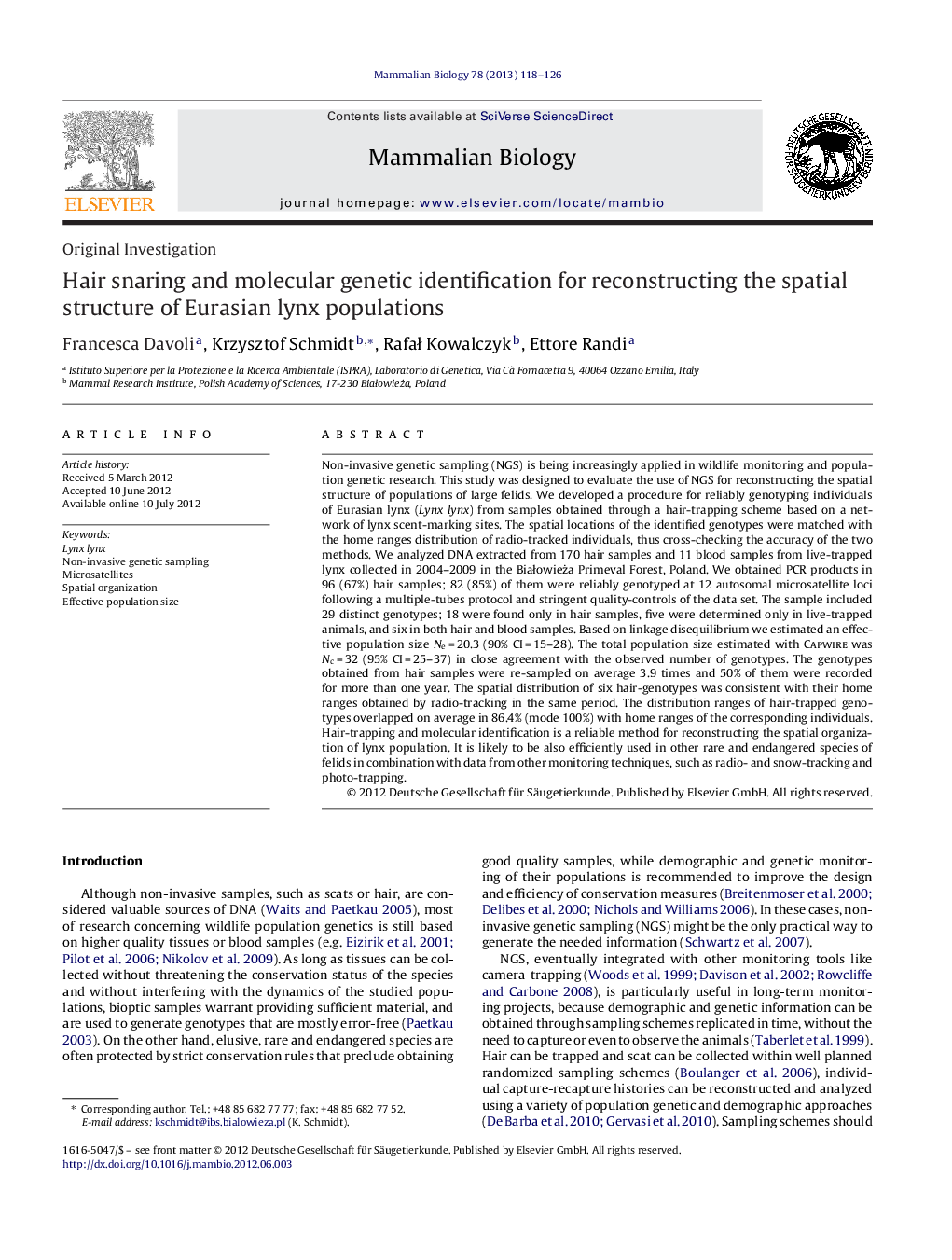| کد مقاله | کد نشریه | سال انتشار | مقاله انگلیسی | نسخه تمام متن |
|---|---|---|---|---|
| 2193575 | 1098386 | 2013 | 9 صفحه PDF | دانلود رایگان |

Non-invasive genetic sampling (NGS) is being increasingly applied in wildlife monitoring and population genetic research. This study was designed to evaluate the use of NGS for reconstructing the spatial structure of populations of large felids. We developed a procedure for reliably genotyping individuals of Eurasian lynx (Lynx lynx) from samples obtained through a hair-trapping scheme based on a network of lynx scent-marking sites. The spatial locations of the identified genotypes were matched with the home ranges distribution of radio-tracked individuals, thus cross-checking the accuracy of the two methods. We analyzed DNA extracted from 170 hair samples and 11 blood samples from live-trapped lynx collected in 2004–2009 in the Białowieża Primeval Forest, Poland. We obtained PCR products in 96 (67%) hair samples; 82 (85%) of them were reliably genotyped at 12 autosomal microsatellite loci following a multiple-tubes protocol and stringent quality-controls of the data set. The sample included 29 distinct genotypes; 18 were found only in hair samples, five were determined only in live-trapped animals, and six in both hair and blood samples. Based on linkage disequilibrium we estimated an effective population size Ne = 20.3 (90% CI = 15–28). The total population size estimated with Capwire was Nc = 32 (95% CI = 25–37) in close agreement with the observed number of genotypes. The genotypes obtained from hair samples were re-sampled on average 3.9 times and 50% of them were recorded for more than one year. The spatial distribution of six hair-genotypes was consistent with their home ranges obtained by radio-tracking in the same period. The distribution ranges of hair-trapped genotypes overlapped on average in 86.4% (mode 100%) with home ranges of the corresponding individuals. Hair-trapping and molecular identification is a reliable method for reconstructing the spatial organization of lynx population. It is likely to be also efficiently used in other rare and endangered species of felids in combination with data from other monitoring techniques, such as radio- and snow-tracking and photo-trapping.
Journal: Mammalian Biology - Zeitschrift für Säugetierkunde - Volume 78, Issue 2, February 2013, Pages 118–126